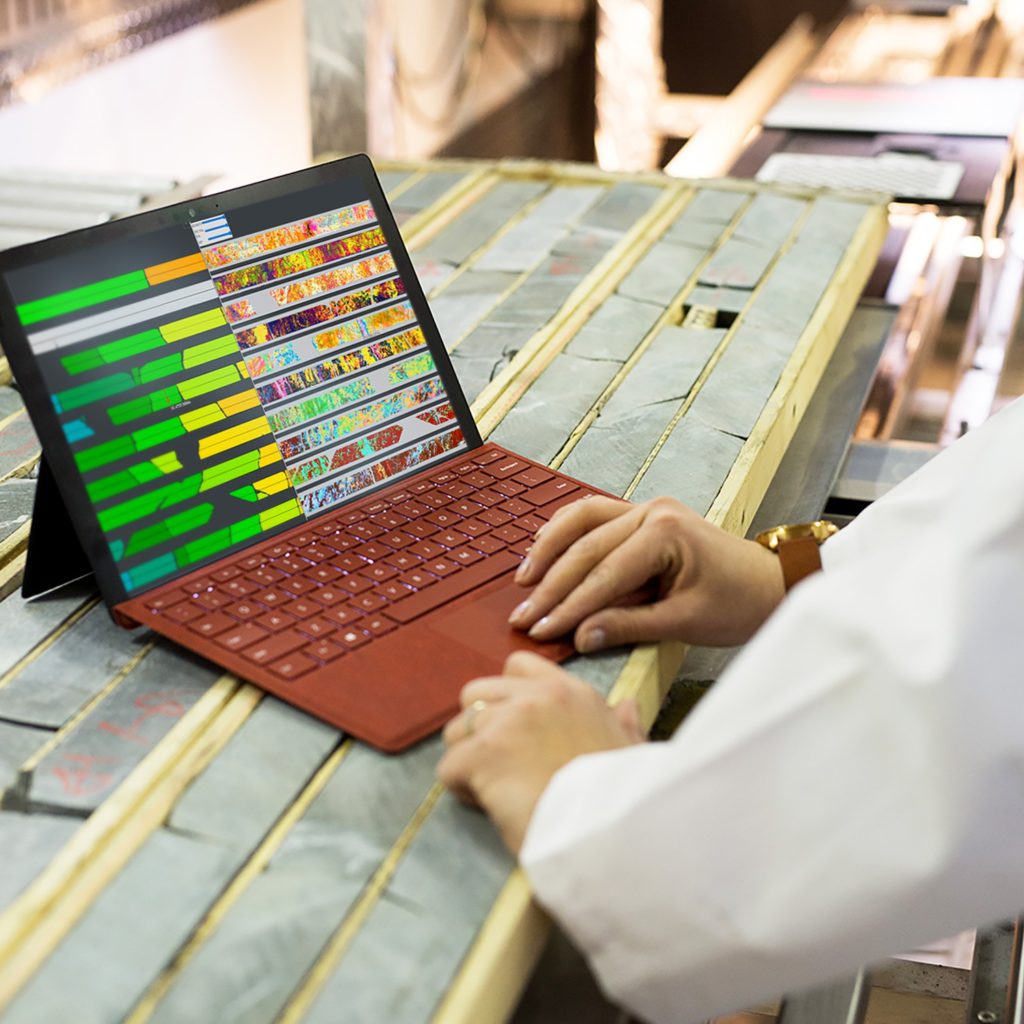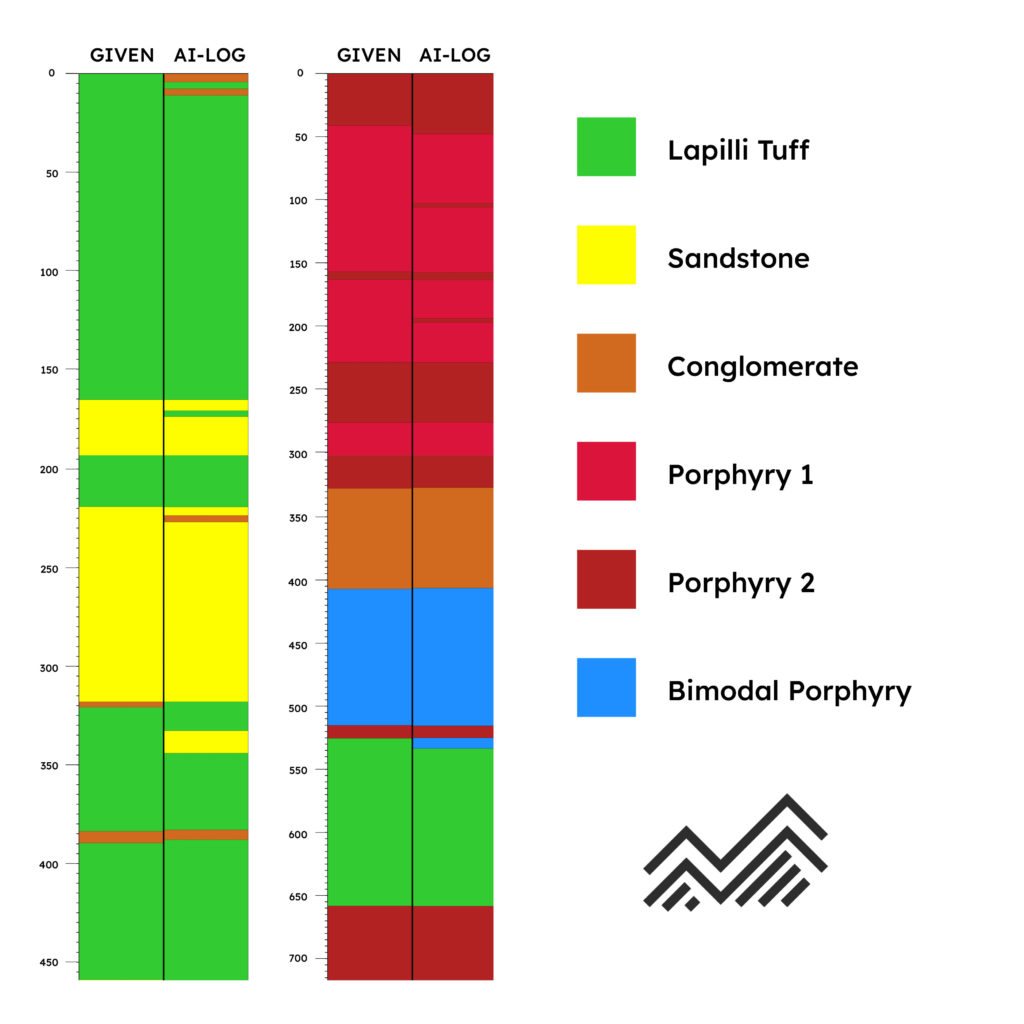The future of core logging
Artificial intelligence (AI) has allowed for groundbreaking technology that results in more consistent data, improved core logging efficiencies, and better decision making. It eliminates the need for mundane tasks and gives geologists time to better interpret their data, allowing them to see the bigger picture.
AI-based core logging is a revolutionary tool aimed at enhancing geologists’ understanding of their orebodies and streamlining decision-making within the mining industry. A Canadian based startup (GeologicAI, formerly known as Enersoft) is transforming this process by combing multi-sensor hardware and AI-based software solutions to produce the most comprehensive datasets in the mining industry.

GeologicAI was founded in 2013 by Grant Sanden and Yannai Segal when they realized the vast capabilities machine vision and AI brought to the oil and gas industry. Their belief was that “Precision information matters. We have the capability of taking geologic data from I have something, to I have exactly this,” says Sanden. The need for this quality of data was not unique to the oil and gas industry, and in 2021 GeologicAI expanded into the mining sector.
Today, with the need for critical minerals at an all-time high, and deposits continuing to increase in cost and complexity, the drive for innovation and technological advancements within the mining industry is more important than ever. But how does it work? In the case of GeologicAI, Segal summarized it perfectly, “AI does not have a strict definition. It analyzes enormous amounts of data from multiple sensors and correlates it all. We are solving problems that simply could not have been solved before.”
In the past, consistency and core logging were far from synonymous. Core was logged by any number of geologists, resulting in inconsistent interpretation and resource modeling. Additional data would have to be cross-referenced and manually added into databases before a geologist would get even close to a comprehensive interpretation of what was happening beneath the surface.
Refining the process, the new solution utilizes data from a variety of sources: RGB and hyperspectral imagery; XRF; LiDAR; and magnetic susceptibility. These sensors, combined with AI-based software, provide geologists with consistent and accessible data. Giving them the opportunity to leverage the power of AI and digital core logging tools to do what they do best: analyze and interpret data.
“Our main goal is to help geologists solve their problems with real-time data and an AI-based suite of logging tools, so they have what they need for any exploration or production project, no matter where they are located,” says GeologicAI president, David Henderson. To do this, GeologicAI developed a robust portable trailer, with customizable sensor arrays to fit any project’s requirements. The trailers are driven or helicoptered to site, core is scanned, and data is processed within 24 to 48 hours and available to clients on their “digital core table.”
Using machine learning and machine vision, the sensors are aligned over any type or size of core and core box to ensure the highest resolution for each scan. Detailed path planning, the workflow for scanning a project’s core, is methodically sequenced and improved by AI to ensure data quality and processing time. A multitude of calibrations and quality control checks are optimized using these algorithms. Michelle Legat, vice-president of geology, states, “We are aiding geologists by giving them more tools. I envision (AI-based core logging) being the industry standard in the very near future. If you are showcasing your deposit, you need these results.”
There is one question many geologists have: once the sensors have captured the vast amount of information, how does AI improve upon the dataset?
The first step in making AI effective is to train it. As core is run through the scanners, site-specific minerals, elemental ratios, and lithologies are identified and logged. As more core is scanned, the AI continuously learns and improves – further enhancing consistencies and efficiencies. Multi-sensor data is stitched together on a pixel level and AI-powered analysis generates products such as mineral maps (hyperspectral data – SWIR and VNIR), elemental curves (XRF), and wet and dry high-resolution RGB imagery. This unprecedented correlation of data is making AI-based core-logging the way of the future.
The Auto-Logger tool uses AI and machine learning to automate lithological logging of facies and sub-facies. Combining hyperspectral, RGB imagery and XRF data, you can see beyond the abilities of the human eye, accessing textural and elemental data to define new lithologies, alterations and contacts. Geologists can quickly see the predicted lithologies and confidence intervals to speed up the logging process and offer remote logging capabilities.
GeologicAI is at the forefront of this cutting-edge technology. They recognize the power of artificial intelligence and machine learning throughout their entire process. Henderson believes that “by providing estimated assays, lithologies, mineralogical features, and more, we are able to help geologists solve their problems while giving more consistent descriptions and a better dataset.” Additional AI and machine vision-based tools include automated RQD calculations, sulfide identification, and vein detection. Other custom AI analysis uses the multi-sensor approach to identify key properties below the detection limits of an individual sensor, apply machine learning algorithms and produce tools such as GeologicAI’s Gold Finder and Automated Sampler.
By working with junior exploration companies to top tier mining companies all over the world, AI helps to improve a site’s understanding of their deposit from feasibility to production. The digital core table and its respective AI-based tools are helping geologists improve data consistencies and logging efficiencies, maximizing the speed, and understanding of the overall mining cycle.
In 2021, GeologicAI proved remote logging was possible by using their tools to scan 40,000 metres of core from a remote site in the Yukon. This data was then easily exported into databases and into modeling programs for enhanced resource modeling at a time when labor was scarce, and accessibility was limited. The company is the world’s largest supplier of quality core logging data and rock analytics. “GeologicAI is the first to put all these tools together in one package. We are providing next-day results which empowers geologists and drillers to quickly determine end-of-hole, improved data consistency, and a reference library of historic core geologists can access at any time,” said Legat.

Artificial intelligence is helping geologists answer questions like: Are we exploring in the right place? What is the potential of this site? What am I looking at? Where do we go next? It is designed to complement geologist’s skill sets, giving them the resources and abilities to streamline their decision making and further enhance their understanding of their orebody.
Information is power. As AI continues to learn with every scan, this innovative technology will continue to provide comprehensive and usable datasets that streamline decision making, improve orebody knowledge, and maximize mining cycle efficiencies. There will come a day in the not-so-distant future when this technology will be standard at every mine site and geologists will wonder how they ever did their job without the contribution of AI.
Comments